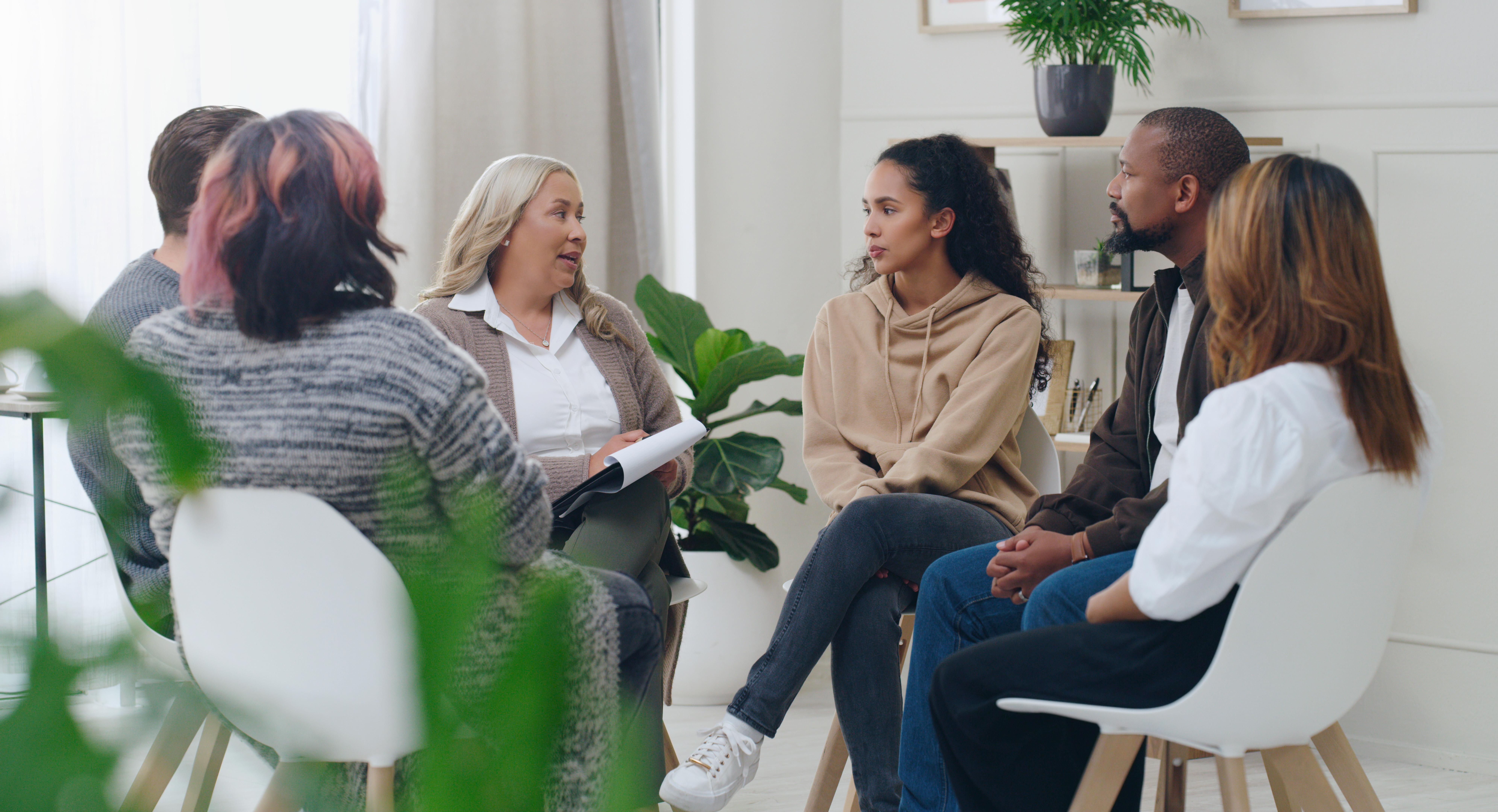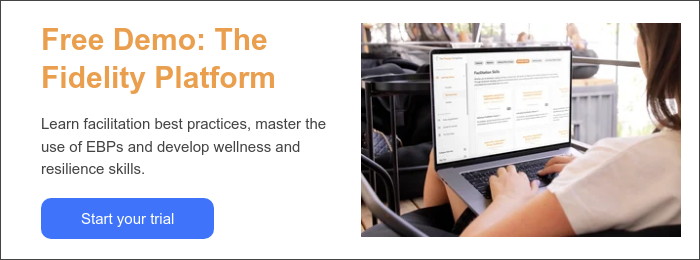Managing group dynamics in counseling and treatment groups

Group counseling offers a compelling setting for learning, growth and change, but it can also pose challenges for facilitators. Below are some evidence-based ideas for facilitating group counseling and ensuring a positive atmosphere that best meets participants’ needs.
Facilitating group cohesion
Building group cohesion and trust is key to beneficial group counseling. While some groups may develop trust easily, some will need a little more help from the facilitator. Consider these tips:
- Learn and use participants’ names.
- Validate participant sharing and differing points of view.
- Use icebreakers to help facilitate early conversations and encourage participants to discover shared experiences.
- As they come up, bring the things participants have in common to the group’s attention to help build mutual understanding.
- Use activities focused on pairing up two or three participants at a time to share their thoughts and get to know one another.
- Use and encourage appropriate humor.
Establishing group agreements early on is also a helpful tool for building group cohesion.
| Each of The Change Companies' Interactive Journals have accompanying Facilitator Guides designed for one-on-one and group counseling. They offer evidence-based activities, discussion topics and motivational questions — including small group activities to help form bonds between participants. |
Troubleshooting group dynamics
For facilitators, one of the most important tasks (and challenges) is keeping discussions on track. You want to encourage active participation, but you don’t want the conversation shifting from the main objective — helping to facilitate positive behavior change. There is no magic formula that works for everyone, and your personal facilitation style will often come into play. Below are a few common challenges, as well as some solutions you might consider:
|
The group is asleep with their eyes open. It happens, so don’t give up and throw on a movie. Have participants move! Give the group a task they can do in triads or small groups so everyone has a turn talking. |
|
The group is shy. What do you do if you ask questions and no one answers? Quiet groups can take a lot of group cohesion-building and icebreaker exercises. Do more triads and small group activities to get participants involved. Use brainstorming, ask open-ended questions and solicit opinions and perspectives rather than right or wrong answers. |
|
The group has bonded and is noisy. It’s great when a group gets along, but it’s often helpful to set boundaries with group counseling participants. Use the timeout sign as needed and instruct the group to be quiet. Get their attention by sincerely saying, “I need for you to be a bit less noisy and be more thoughtful on this topic. I would hate for you to miss some important information or ideas that might help you.” |
Managing different personalities
Often, there are a few members of group therapy sessions who can make facilitation more challenging. Using the timeout sign is often an effective way to pause unhelpful group discussions or individual comments. Below are some common examples of challenging personalities and possible solutions:
|
The dominator This person often dominates group sessions with their own commentary, leaving little room for others. Ask the person to stay after the session and let them know that they have great responses, but they’re letting the rest of the group off easy: “I would like you to help me make the group work harder by refraining from answering right away.” During a session, facilitators can also suggest that they’d like to hear some new voices, and “don’t want Joe here to do all the work.” |
|
The insulter This person cuts people down, picks on their comments or may even make sexist or racist remarks. Correcting these comments right away will help maintain group cohesion. Ask the person to stay after the session is over: “For this group to be successful, everyone has to feel comfortable talking in group. Your comments shut people down and have to stop.” Facilitators can also tell the participant during group that their comments are inappropriate and need to stop. |
|
The comedian If the humor is appropriate and not mean-spirited, then use that person to generate energy if the group is dragging. If it gets out of hand, use the timeout sign to redirect. Also note that sometimes humor is a way to avoid looking at difficult topics that may hit close to home. In that case, you may want to take the person aside and tell him or her you appreciate the humor but that humor can sometimes aid in avoiding a topic. |
Keeping discussions on track
- Set goals. Being clear on what the group is aiming to accomplish during each session can help refocus attention if they get sidetracked.
- Prompt discussions with questions designed to move participants in a direction that matches your objectives. Consider writing key questions on the board to help refocus the group’s attention throughout the session.
Motivational interviewing: Asking the right questions →
- Parking lot: If participants pose questions and issues that are likely to get the discussion off track, try using the “parking lot” technique. The parking lot is a space where appropriate participant questions can be written. These questions can be addressed if there is time at the end of the session: “Let’s add that to the parking lot. For now, let’s address the topic at hand.”

Explore more facilitation resources from The Change Companies:
Consider ways of engaging clients in their treatment programs.
Learn more about working with involuntary clients.
Explore our virtual trainings.
Get a free demo of our facilitator-specific learning tool, the Fidelity Platform.

